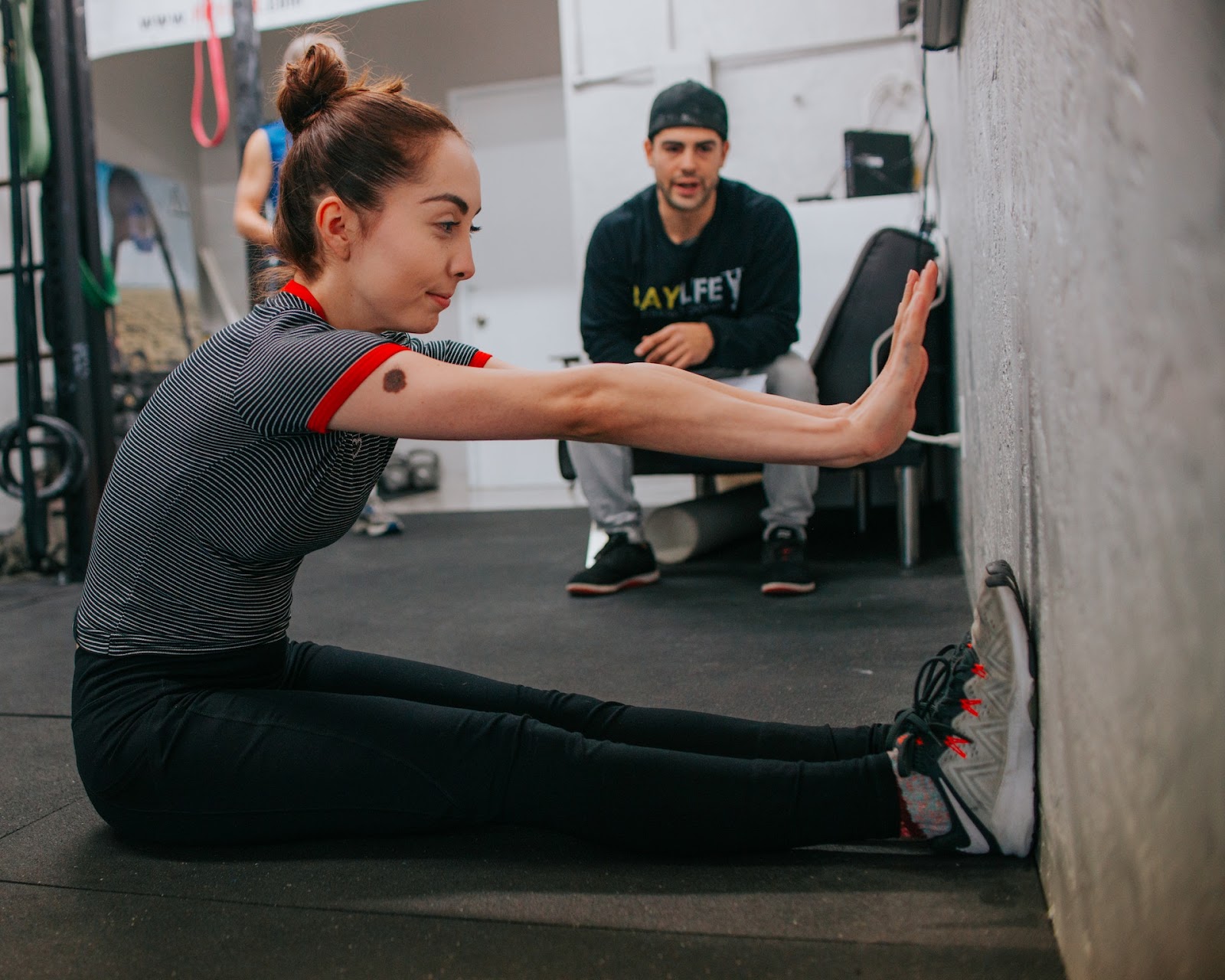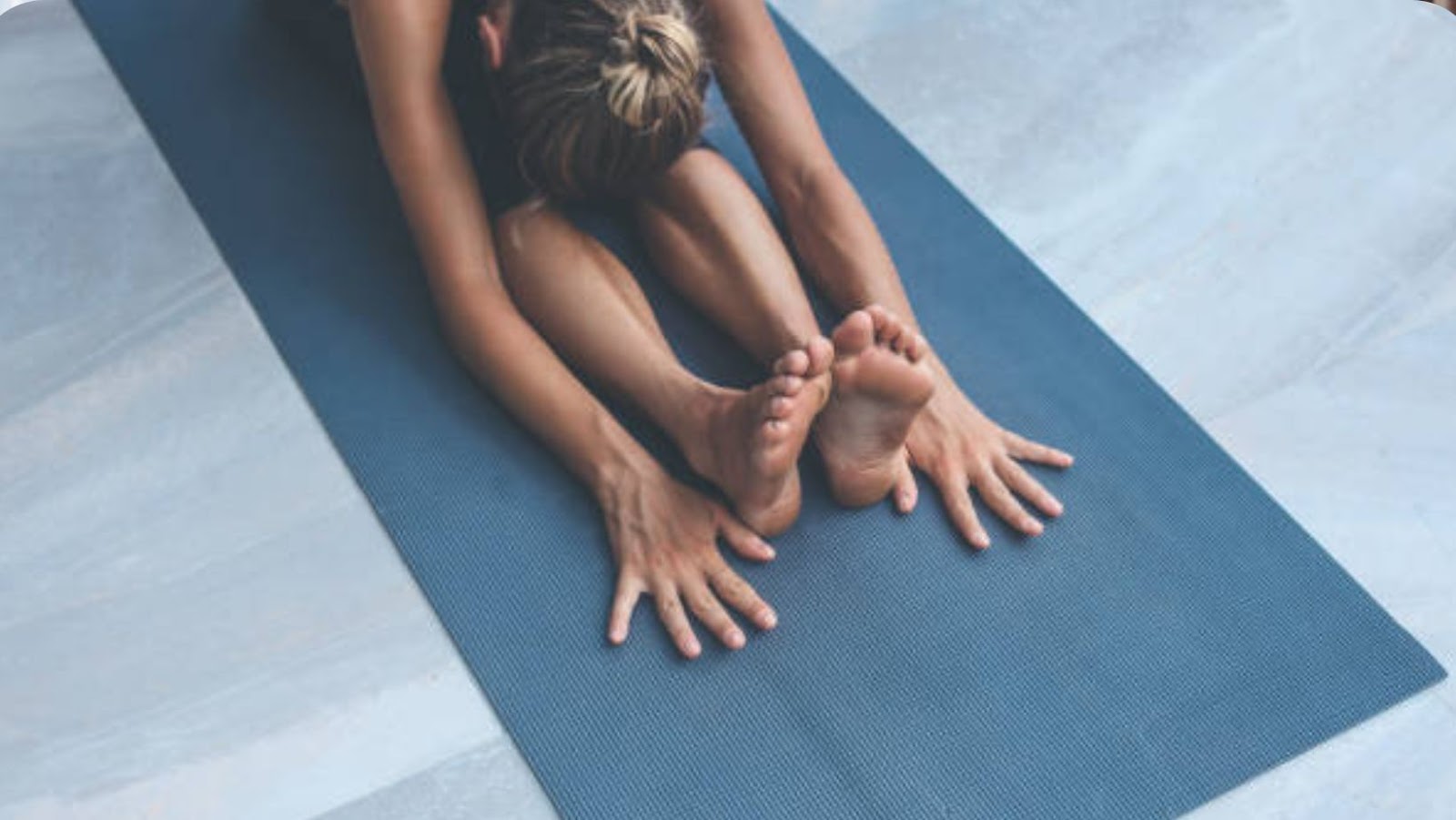Creating a stretching routine that works for you is an important step to improving your flexibility, mobility, and overall physical health.
Here are some steps to follow to create an effective stretching routine:
| Step | Description |
| 1. Identify your goals | Do you want to increase flexibility, reduce tension or improve posture? |
| 2. Choose stretches | Select stretches that target the areas you want to improve. |
| 3. Set a schedule | Plan when and how often you will stretch. |
| 4. Warm-up | Before stretching, do a quick warm-up to loosen up your muscles. |
| 5. Start small | When beginning, start with easy stretches and gradually progress to more difficult ones. |
Remember, consistency is key. Stick to your stretching routine even if you don’t see the results right away. Over time, you’ll notice improvements in your flexibility and mobility.
Pro tip: Consult with a physical therapist or trainer to create a stretching routine tailored to your specific needs and limitations.
A Full Stretching Session Should Take Between __________.
Stretching can improve your flexibility and range of motion, as well as help you reduce the risk of injury by promoting healthy tissues and joints. It also helps reduce muscle tension and can help to reduce muscle soreness and fatigue. A regular stretching routine can even improve your posture and help to improve your athletic performance in sports or physical fitness.
Let’s get into the details of how we can create a stretching routine.
Improves Flexibility and Range of Motion
Stretching is an essential component of any fitness routine as it facilitates flexibility and range of motion in the muscles and joints. A well-established stretching routine can help to reduce muscle tension, improve posture, and prevent injury. Here are some key steps you can follow to create an effective stretching routine:
| – Start with a warm-up: perform dynamic movements like jumping jacks or jogging in place to increase your body’s temperature and prepare your muscles for stretching. |
| – Hold stretches for at least 30 seconds: Your stretches should last long enough for the muscle fibers to release tension and elongate. |
| – Stretch all major muscle groups: including neck, shoulders, back, hips, legs, and feet. |
| – Incorporate different types of stretches: utilize both static and dynamic stretches to target different aspects of flexibility. |
| – Stretch after workouts: Cool-down stretches can help to reduce muscle soreness and promote recovery. |
Remember, consistency is key to improving your flexibility and range of motion – make stretching a regular part of your fitness routine.
Pro tip: Consider incorporating yoga poses and resistance bands into your stretching routine to change things up and keep your muscles challenged.
Reduces Risk of Injury
Regular stretching routine is a great way to reduce the risk of injury in your everyday life. By improving flexibility and strengthening muscles, stretching can help you perform daily activities with ease and efficiency while also preventing the risk of injuries. Here are some tips to help you create an effective stretching routine:
| Start by stretching for at least 10 minutes before and after exercising. |
| Choose stretches that target the muscle groups you use most often. |
| Hold each stretch for 15-30 seconds, making sure to stretch both sides of your body. |
| Always warm up before stretching to avoid injury. |
| Stretch slowly and don’t bounce during the stretch. |
| Incorporate stretching into your daily routine, such as stretching while watching TV or brushing your teeth. |
| By creating a stretching routine and sticking to it, you can protect your body from injury and improve your overall fitness and mobility levels. |

Reduces Muscle Tension and Soreness
Stretching is an effective way to reduce muscle tension and soreness, especially after an intense workout or a long day of sitting at a desk. By incorporating a regular stretching routine, you can improve your flexibility, mobility, and overall sense of well-being.
Here’s how you can create a stretching routine:
| 1. Choose the right stretches for your body: | Focus on the areas that feel tight or prone to soreness. |
| 2. Start with a warm-up: | Before doing any stretches, warm up your muscles with light cardio or dynamic movements like jumping jacks or high knees. |
| 3. Hold each stretch for at least 30 seconds: | This duration allows for adequate muscle elongation and relaxation. |
| 4. Breathe deeply: | Deep breathing helps to calm your body and increase your flexibility. |
| 5. Make stretching a habit: | Set aside time each day to stretch, whether it’s first thing in the morning or before bed. |
By following these steps, you can create a stretching routine that works for you and enjoy the benefits of reduced muscle tension and soreness.
Understanding Types of Stretches
Different types of stretching can be used in many ways to improve your overall flexibility. Before creating a stretching routine, it is important to understand the different types of stretches and the purpose they serve. This includes dynamic, ballistic, myofascial release and active stretching. Let’s take a look at each type of stretching and how they can help you.
Static Stretches
Static stretches are an essential component of any stretching routine. In this type of stretch, you slowly extend the muscle to its full length and hold it there for a predetermined amount of time, usually between 10-30 seconds. There are a variety of static stretches that you can include in your stretching routine for maximum benefit, including:
| Hamstring Stretch: | Sit on the ground with your legs straight, lean forward, and reach for your toes. |
| Quadriceps Stretch: | Standing on one foot, bring your heel to your buttocks and hold onto it with your hand. |
| Butterfly Groin Stretch: | Sit on the ground with your feet touching and your knees bent, use your elbows to press your knees towards the ground. |
| Shoulder Stretch: | Cross your right arm over your chest, use your left arm to pull your elbow towards your left shoulder. |
Creating a stretching routine can help improve your flexibility, range of motion, and overall mobility. It’s essential to include stretching as part of your fitness regimen to avoid injury and keep your muscles healthy.
Dynamic Stretches
Dynamic stretches are a type of stretching exercise that helps to increase your body’s internal temperature and blood flow before a workout or physical activity. These stretches can be incorporated into your pre-workout routine to loosen up your muscles and improve your range of motion. Here are some examples of dynamic stretches that can be included in your stretching routine:
| Stretches |
| Leg Swings: Stand facing a wall or support, swing one leg forward and backward, then side-to-side. Repeat on other leg. |
| Lunge with a Twist: Lunge forward with your right leg, twist your torso to your right knee, then come up and switch legs. |
| High Knees: Alternate lifting your knees to hip height, keeping your core engaged. |
| Arm Circles: Stand with your arms extended at shoulder height and make small circles with both arms backward and forwards. |
Incorporating dynamic stretches into your stretching routine will help to prepare your body for physical activity, reduce the risk of injury and improve your performance during exercise.
Proprioceptive Neuromuscular Facilitation (PNF) Stretches
Proprioceptive Neuromuscular Facilitation (PNF) stretches are one of the most effective types of stretches you can include in your stretching routine. PNF techniques involve both stretching and contracting a muscle group through its fullest range of motion. These techniques help to improve flexibility, increase strength, and reduce the risk of injury.
There are three types of PNF stretches:
| Type | Description |
| Hold-Relax | The muscle group is stretched and held in place, then contracted isometrically for several seconds before being relaxed and stretched again. |
| Contract-Relax | The muscle group is contracted isometrically before being stretched and held for several seconds. |
| Hold-Relax with Agonist Contraction | The muscle group is stretched and held in place, while the opposing muscle group is contracted, resulting in a more intense stretch. |
Pro Tip: PNF stretches should only be performed after a proper warm-up and should be done with a partner or a qualified trainer to help you achieve the best results.

Creating Your Stretching Routine
Stretching is an important part of any workout routine. Regular stretching helps improve flexibility, reduce the risk of injuries and make exercising more comfortable. Creating a stretching routine can help you make sure that you’re consistently stretching and getting the most of out of it.
In this article, we’ll explain how to create a stretching routine that’s tailored to your individual needs and goals.
Determine Your Goals and Needs
Before creating a stretching routine, it’s essential to determine your goals and needs to ensure that your routine is tailored to your body’s requirements and helps you achieve your desired outcomes.
Here are the steps to follow in determining your goals and needs:
| 1. Assess your current physical condition and flexibility level. |
| 2. Decide on your goals, such as improving your flexibility, reducing muscle tension, relieving stress or preparing for a specific physical activity. |
| 3. Consider your lifestyle and schedule, to determine how much time you can devote for your stretching routine daily or weekly. |
| 4. Identify any areas of your body that are stiff or painful, which requires special attention during your stretch routine. |
Once you’ve determined your goals and identified your body’s needs, you can proceed to create a stretching routine that’s customized for your body and lifestyle.
Choose the Right Stretches
Choosing the right stretches for your body is crucial when creating a stretching routine that is effective and sustainable.
Here are some tips to keep in mind when selecting stretches for your routine:
| Consider your goals: | Are you looking to improve flexibility, relieve tension, increase mobility, or prevent injury? Choose stretches that align with your goals. |
| Target key muscle groups: | Focus on stretching the muscle groups that are tight, overused, or prone to injury. Some common areas include the hips, back, neck, and shoulders. |
| Choose stretches that feel good: | Your stretches should be challenging yet enjoyable. Listen to your body and avoid stretches that cause pain or discomfort. |
| Mix it up: | Avoid doing the same stretches every day. Incorporate a variety of stretches that target different muscles and movement patterns to keep your routine fresh and effective. |
| Pro Tip: | Consult a physical therapist or fitness professional to help you create a stretching routine that is tailored to your specific needs and goals. |
Frequency and Duration
One of the most important aspects of creating a stretching routine is determining the frequency and duration of your stretches. Here are some guidelines to help you establish an effective stretching routine:
| Frequency | Duration |
| It is recommended to stretch every day, but if time is an issue, aim for at least three times a week. | Hold each stretch for at least 15-30 seconds to fully benefit from the stretch. Repeat each stretch 2-4 times. Take time to focus on your breathing while stretching to help you relax and get the most out of your stretching routine. |
Pro tip: Be consistent with your stretching routine and gradually increase the difficulty and duration of your stretches over time. Don’t forget to listen to your body and avoid pushing yourself too hard, which can result in injury.
Tips for a Successful Stretching Routine
Creating a stretching routine can be beneficial for your physical health and mental wellbeing. It can help reduce stress and improve your flexibility, balance, and range of motion. To ensure that your stretching routine is effective, there are a few tips and tricks you should keep in mind.
In this article, we will explore the best ways to create a successful stretching routine.
Warm-up First
Before starting any stretching routine, a good warm-up is essential for preventing injuries and getting the most out of your stretch. Here are some tips for creating a successful stretching routine:
| Perform a light cardio exercise such as jogging, cycling or jumping jacks for 5-10 minutes. This will raise your body temperature and increase blood flow to your muscles. |
| Choose stretches for all of your major muscle groups, including your neck, shoulders, chest, back, hips, thighs, and calves. |
| Hold each stretch for at least 15-30 seconds and breathe deeply throughout. Avoid bouncing or jerking, and never stretch to the point of pain. |
| It’s best to do your stretches after your workout when your muscles are already warm, but if you’re doing them before, be sure to perform an extended warm-up. |
| Repeat your stretching routine at least two to three times per week, and adjust your stretches as needed to target areas where you feel tightness or discomfort. |
| Remember, stretching should be a relaxing and enjoyable experience, so take your time and listen to your body. Pro tip: Try incorporating stretching into your daily routine by doing them while watching TV or before bedtime. |
Breathe Deeply and Slowly
One of the most important aspects of a successful stretching routine is to breathe deeply and slowly throughout the practice.
Here’s how proper breathing can help you create an effective stretching routine:
Deep breathing helps oxygenate the muscles and calms the mind, making it easier to focus on the stretches and maintain good form.
Slow, mindful breathing also helps reduce tension and stress levels in the body. This, in turn, makes it easier to relax and deepen the stretches.
To incorporate breathing into your stretching routine, take slow and deep breaths through your nose, filling your lungs completely, and exhaling through your mouth. Try to coordinate the inhales and exhales with the movements of your body.
By breathing deeply and slowly while you stretch, you can maximize the benefits of your stretching routine and promote overall well-being.

Do Not Overstretch or Bounce
Overstretching or bouncing during a stretching routine can cause damage to your muscles and nerves. To have a successful stretching routine, follow these tips:
| Warm-up | Start with a 5-10 minute warm-up before stretching to increase blood flow and mobility in your muscles. |
| Gentle Stretching | Ease into each stretch and hold it for at least 15-30 seconds. Do not bounce or jerk your body during the stretch. |
| Breathing | Breathe deeply and slowly while holding the stretch. Exhale as you deepen your stretch, inhale as you release it. |
| Listen to your body | Pay attention to your body’s signals and adjust your stretching intensity or duration accordingly. |
| Cool-down | End your stretching routine with a light 5-minute cardio activity and stretching the same muscle groups you started with. |
By following these tips, you can create an effective stretching routine that helps you achieve improved flexibility, range of motion, and prevents injury.
Track Your Progress and Make Adjustments
To create a successful stretching routine, it is important to track your progress and make adjustments along the way for a more personalized experience. Here are some tips to help you get started:
| 1. Start slowly and gradually increase the frequency and intensity of your stretches to avoid injury. |
| 2. Keep track of which stretches you do and how long you hold each one. |
| 3. Keep a journal or use a stretching app to track your progress and make note of any pain or discomfort you experience. |
| 4. Be open to making adjustments as needed. If certain stretches aren’t working for you, try replacing them with others that target the same muscle groups. |
| 5. Consult with a medical professional or a certified trainer if you have any pre-existing conditions or concerns about certain stretches. |
By tracking your progress and making adjustments, you can create a stretching routine that is tailored to your individual needs and preferences, and help to achieve your wellness goals more effectively.
Pro Tip: Experiment with different stretching techniques, like dynamic stretching or foam rolling, to find what works best for your body.
Incorporating Stretching into Your Overall Fitness Routine
Stretching is an important part of any fitness routine and can help reduce your risk of injury. It can also improve your flexibility and range of motion, allowing you to perform better during physical activities. Knowing how to create a stretching routine tailored to you can help you get the most out of your workouts.
Let’s go over the steps for creating a stretching routine that works for you.
Before a Workout
Stretching before a workout can help prepare your body for physical activity and reduce your risk of injury. Here are some tips to create a stretching routine that works for you.
Use dynamic stretching: Dynamic stretching involves moving joints and muscles through a full range of motion, helping to increase blood flow and activate muscles before the workout.
Focus on major muscle groups: Stretching the major muscle groups that you will be using during your workout can help improve flexibility and reduce the risk of injury.
Hold stretches for 15-30 seconds: Holding stretches for too long can cause injury; aim to hold each stretch for 15-30 seconds and repeat each stretch 2-4 times.
End with static stretching: Incorporating static stretches at the end of your workout can help improve muscle flexibility and reduce muscle soreness.
Remember to listen to your body and modify stretches as necessary to avoid injury. Pro Tip: Incorporate different types of stretches, like yoga or foam rolling, into your routine to keep it interesting and challenging.
After a Workout
Stretching after a workout is a crucial part of any fitness routine, as it helps prevent injury and improves flexibility.
Here are some tips for creating an effective stretching routine:
- Determine which muscles you want to focus on based on the workout you just completed.
- Start with a gentle warm-up, such as light jogging or jumping jacks, to get your blood flowing and your muscles loose.
- Hold each stretch for at least 15-30 seconds while taking slow, deep breaths.
- Stretch all major muscle groups, including your neck, shoulders, arms, back, legs, and hips.
- End with a cool-down period that includes walking and slow stretching to help your body regulate your breathing and heart rate.
- Remember to listen to your body and never force a stretch that feels uncomfortable. It’s better to start with a shorter routine and gradually increase the length and intensity as your body becomes more flexible.
Standalone Stretching Sessions
Standalone stretching sessions can be incredibly beneficial and help to enhance your overall fitness routine. Here are some tips on how to create a stretching routine:
| Set aside time: | Schedule 10-15 minutes each day for stretching exercises. This will give you a set time to focus on stretching and help make it a habit. |
| Warm-up: | Perform some light physical activity before stretching. This could be a quick walk or jog, and it will help to warm up your muscles and increase blood flow. |
| Focus on different muscle groups: | Incorporate different stretches that target different muscle groups. This will ensure you’re stretching your entire body and prevent tight muscles that can lead to injuries. |
| Use proper form: | Make sure you’re using proper form when stretching. Stretch to the point of slight discomfort, but never pain. Bouncing or overstretching can cause injury, so be careful. |
| Breathe deeply: | While stretching, take deep breaths to help oxygenate your muscles and relax your body. |
| Pro tip: | Incorporate stretching exercises throughout the day, like stretching your arms or legs during a break at work or school. Regular stretching can help improve your flexibility, posture, and overall health. |
